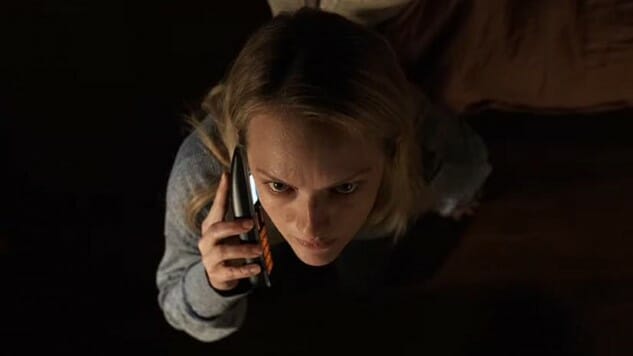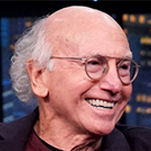The Best Movies on Peacock (October 2025)

Peacock might have an unassuming name compared to the beefy energy drink title that is HBO Max or the clear branding of Amazon, but the NBCUniversal streamer isn’t slouching with its offerings. The best Peacock movies in its vast library are by and large quite good (that’s what happens when a studio starts its own streaming service), with the added bonus that it has a free, ad-supported tier—which is even better than the likes of Hulu, which still charges a monthly fee in addition to running commercials. And its free TV isn’t bad either.
Hiding behind the paywall (or the week-long trial subscription, if you want to binge some movies) are collections including animated classics—like Chicken Run—and Alfred Hitchcock favorites—Rope, Psycho, Rear Window, Vertigo and more—but on the free side of things, the pickings certainly aren’t slim. Tons of well-loved filmmakers are represented, from Werner Herzog and George Romero to Spike Lee and Steven Spielberg.
Whether it’s horror, drama, documentary, or westerns, Peacock has enough movies to keep you satisfied—and we’ll be updating this list every month to keep you apprised of the latest and greatest.
Here are the best movies on Peacock right now:
1. Monty Python and the Holy Grail
Year: 1975
Director: Terry Gilliam, Terry Jones
Stars: Graham Chapman, Eric Idle, Michael Palin, John Cleese, Terry Gilliam, Terry Jones
Rating: PG
It sucks that some of the shine has been taken off Holy Grail by its own overwhelming ubiquity. Nowadays, when we hear a “flesh wound,” a “ni!” or a “huge tracts of land,” our first thoughts are often of having full scenes repeated to us by clueless, obsessive nerds. Or, in my case, of repeating full scenes to people as a clueless, obsessive nerd. But, if you try and distance yourself from the over-saturation factor, and revisit the film after a few years, you’ll find new jokes that feel as fresh and hysterical as the ones we all know. Holy Grail is, indeed, the most densely packed comedy in the Python canon. There are so many jokes in this movie, and it’s surprising how easily we forget that, considering its reputation. If you’re truly and irreversibly burnt out from this movie, watch it again with commentary, and discover the second level of appreciation that comes from the inventiveness with which it was made. It certainly doesn’t look like a $400,000 movie, and it’s delightful to discover which of the gags (like the coconut halves) were born from a need for low-budget workarounds. The first-time co-direction from onscreen performer Terry Jones (who only sporadically directed after Python broke up) and lone American Terry Gilliam (who prolifically bent Python’s cinematic style into his own unique brand of nightmarish fantasy) moves with a surreal efficiency. —Graham Techler
2. Psycho
Year: 1960
Director: Alfred Hitchcock
Stars: Anthony Perkins, Vera Miles, John Gavin, Martin Balsam, John McIntire, Janet Leigh
Rating: R
The big one. The biggest one, perhaps, though if not, it’s still pretty goddamn big. 60 years after Alfred Hitchcock unleashed Psycho on an unsuspecting moviegoing culture, finding new things to say about it feels like a fool’s errand, but hey: Six decades and change is a long time for a movie’s influence to continue reverberating throughout popular culture, but here we are, watching main characters lose their heads in Game of Thrones, their innards in The Walking Dead, or their lives, in less flowery language, in films like Alien, the Alien rip-off Life and, maybe most importantly, Scream, the movie that is to contemporary horror what Psycho was to genre movies in its day. That’s pretty much the definition of “impact” right there (and all without even a single mention of A&E’s Bates Motel). But now we’re talking about Psycho as a curio rather than as a film, and the truth is that Psycho’s impact is the direct consequence of Hitchcock’s mastery as a filmmaker and as a storyteller. Put another way, it’s a great film, one that’s as effective today as it is authoritative: You’ve never met a slasher (proto-slasher, really) like Norman Bates (Anthony Perkins), and no matter how many times the movies try to replicate his persona on screen, they’ll never get it quite right. He is, like Psycho itself, one of a kind. —Andy Crump
3. Ghostbusters
Year: 1984
Director: Ivan Reitman
Stars: Bill Murray, Dan Aykroyd, Sigourney Weaver, Harold Ramis, Ernie Hudson, Rick Moranis, William Atherton
Rating: PG
As the slew of ’80s merchandise and a cartoon series would prove, Ghostbusters had mass-appeal with kids. The film followed a team of parapsychologists—played by Dan Aykroyd, the late Harold Ramis, Ernie Hudson and Bill Murray—who tackle big-ghost issues in New York City. Sure some of the effects are dated, but this one has staying power, and near-infinite quotability. And although the bad guys come from beyond the grave, they’re also kid-friendly, with the begging-to-be-a-plush-toy Slimer and a giant Stay-Puft Marshmallow Man. Pass this classic comedy along to the next generation, while more or less ignoring the middling remake, which was neither as good or bad as fans or detractors made it out to be. —Tyler Kane
4. Monty Python’s Life of Brian
Year: 1979
Director: Terry Jones
Stars: Graham Chapman, John Cleese, Terry Gilliam, Eric Idle, Terry Jones, Michael Palin
Rating: R
Pretty much made on George Harrison’s dime and considered, even if apocryphally, by the legendary comedy troupe to be their best film (probably because it’s the closest they’ve come to a three-act narrative with obvious “thematic concerns”), Life of Brian got banned by a lot of countries at the butt-end of the ’70s. As a Christ story, the telling of how squealy mama’s boy Brian (Graham Chapman) mistakenly finds himself as one of many messiah figures rising in Judea under the shadow of Roman occupation (around 33 AD, on a Saturday afternoon-ish), Monty Python’s follow-up to Holy Grail may be the most political film of its ilk. As such, the British group stripped all romanticism and nobility from the story’s bones, lampooning everything from radical revolutionaries to religious institutions to government bureaucracy while never stooping to pick on the figure of Jesus or his empathetic teachings. Of course, Life of Brian isn’t the first film about Jesus (or: Jesus adjacent) to focus on the human side of the so-called savior—Martin Scorsese’s take popularly did so less than a decade later—but it feels like the first to leverage human weakness against the absurdity of the Divine’s expectations. Steeped in satire fixing on everything from Spartacus to Franco Zeffirelli’s Jesus of Nazareth, and buttressed by as many iconic lines as there are crucifixes holding up the film’s frames (as Brian’s equally squealy mother hollers to the swarming masses, “He’s not the messiah. He’s a very naughty boy!”), the film explores Jesus’s life by obsessing over the context around it. Maybe a “virgin birth” was really just called that to cover up a Roman centurion’s sexual crimes. Maybe coincidence (and also class struggle) is reality’s only guiding force. Maybe the standard of what makes a miracle should be a little higher. And maybe the one true through line of history is that stupid people will always follow stupid people, whistling all the way to our meaningless, futile deaths. —Dom Sinacola
5. Day of the Dead
Year: 1985
Director: George A. Romero
Starring: Lordi Cardille, Terry Alexander, Joe Pilato, Richard Liberty
Rating: R
Although Dawn will probably always have more esteem, and is significantly more culturally important, Day of the Dead is my personal favorite of George Romero’s zombie films, and I don’t think it ever quite gets the respect it deserves. It comes along at a sort of sweet spot–bigger budget, more ambitious ideas and Tom Savini at the zenith of his powers as a practical effects artist. The human characters this time are scientists and military living in an underground bunker, which for the first time in the series gives us a wider view of what’s been going on since the dead rose. This film reintroduces the science back into zombie flicks, finally making one of the main characters a researcher (Matthew “Frankenstein” Logan) who has had some time to study the zombies in the relative safety of a lab. As such, the movie redefines the attributes of the classic Romero ghoul–they’re dumb, but not entirely unintelligent, and some of them can even be trained to use tools and possibly remember certain aspects of their previous lives. That of course brings us to “Bub,” maybe the single most iconic zombie in Romero’s oeuvre, who displays a unique level of personality and even humor. Day of the Dead ultimately takes a monster that audiences thought they knew pretty well at this point and suggests that perhaps they were only just scratching the surface of zombies’ potential. —Jim Vorel
6. Emma.
Year: 2020
Director: Autumn de Wilde
Stars: Anya Taylor-Joy, Johnny Flynn, Bill Nighy, Mia Goth, Josh O’Connor, Callum Turner, Miranda Hart
Rating: PG
Shot as though each frame were a frothy realist painting, scored as though it were a Chaplin-esque silent film and pulled together by a cast of comedically impeccable performances, Autumn de Wilde’s feature-length debut, Emma., is made up almost entirely of thrillingly executed moments. More comedy of manners than straight romance, both Jane Austen’s novel and de Wilde’s film take as their subject a happily single Emma Woodhouse (Anya Taylor-Joy), the “handsome, clever, and rich” mistress of an English country estate, as she fills her days as by mounting a series of ego-driven (if well-intentioned) matchmaking schemes. Signaled by the film’s opening in the soft dawn hours of the village’s latest Emma-orchestrated wedding day, these schemes have a history of being remarkably successful—successful enough, at least, that on one side, Emma has her co-dependent, doom-and-gloom father (a charming, if anxious, Bill Nighy) cautioning her not to start any schemes that might take her away from him, while on the other, she has the Woodhouses’ handsome family friend, Mr. Knightley (a refreshingly fiery Johnny Flynn), cautioning her against riding so high on her previous matchmaking coups that she starts an audacious scheme even she can’t pull it off. Beyond creating what would be a solid moviegoing experience in any context, the warm, boisterous sense of community this deep attention to detail works to build is, as Paste’s Andy Crump highlights in his thoughtful interview with de Wilde and Taylor-Joy, exactly what any 2020 take on a 205-year-old comedy of manners needed to cultivate. With our current cultural moment so defined by protracted digital isolation—and its cousin, anonymity-enabled cruelty—the best thing de Wilde’s Emma. could do was lean so hard into the sublimity of Austen’s original that, for the entirety of its gloriously phone-free two-hour runtime, its audience might feel, collectively, transported. —Alexis Gunderson
7. The Northman
Year: 2022
Director: Robert Eggers
Stars: Alexander Skarsgård, Nicole Kidman, Claes Bang, Anya Taylor-Joy, Ethan Hawke, Willem Dafoe, Björk
Rating: R
Forged in flame and fury, Robert Eggers’ The Northman is an exquisite tale of violent vengeance that takes no prisoners. Co-written by Eggers and Icelandic poet Sjón (who also recently co-wrote A24’s Icelandic creature feature Lamb), the film is ever-arresting and steeped in the director’s long-standing penchant for period accuracy. Visually stunning and painstakingly choreographed, The Northman perfectly measures up to its epic expectations. The legend chronicled in The Northman feels totally fresh, and at the same time quite familiar. King Aurvandill (Ethan Hawke) is slain by his brother Fjölnir (Claes Bang), who in turn takes the deceased ruler’s throne and Queen Gudrún (Nicole Kidman) for his own. Before succumbing to fratricide, Aurvandill names his young son Amleth (Oscar Novak) as his successor, making him an immediate next target for his uncle’s blade. Narrowly evading capture, Amleth rows a wooden boat over the choppy waters of coastal Ireland, tearfully chanting his new life’s mission: “I will avenge you, father. I will save you, mother. I will kill you, Fjölnir.” Years later, Amleth (played by a muscular yet uniquely unassuming Alexander Skarsgård) has distinguished himself as a ruthless warrior among a clan of Viking berserkers, donning bear pelts and pillaging a series of villages in a furious stupor. The Northman is an accessible, captivating Viking epic teeming with the discordant, tandem force of human brutality and fated connection. Nevertheless, it’s worth mentioning that the film feels noticeably less Eggers-like in execution compared to his preceding works. It boasts a much bigger ensemble, seemingly at the expense of fewer unbroken takes and less atmospheric dread. In the same vein, it eschews the filmmaker’s interest in New England folktales, though The Northman does incorporate Eggers’ fascination with forestry and ocean tides. However, The Northman melds the best of Eggers’ established style—impressive performances, precise historical touchstones, hypnotizing folklore—with the newfound promise of rousing, extended action sequences. The result is consistently entertaining, often shocking and imbued with a scholarly focus. It would be totally unsurprising if this were deemed by audiences as Eggers’ definitive opus. For those already enamored with the director’s previous efforts, The Northman might not feel as revelatory as The Witch or as dynamic at The Lighthouse. What the film lacks in Eggers’ filmic ideals, though, it more than makes up for in its untouchable status as a fast-paced yet fastidious Viking revenge tale. The Northman is totally unrivaled by existing epics—and perhaps even by those that are undoubtedly still to come, likely inspired by the scrupulous vision of a filmmaker in his prime.–Natalia Keogan
8. The Invisible Man
Year: 2020
Director: Leigh Whannell
Starring: Elisabeth Moss, Oliver Jackson-Cohen, Harriet Dyer, Aldis Hodge, Storm Reid, Michael Dorman
Rating: R
Aided by elemental forces, her exquisitely wealthy boyfriend’s Silicon Valley house blanketed by the deafening crash of ocean waves, Cecilia (Elisabeth Moss) softly pads her way out of bed, through the high-tech laboratory, escaping over the wall of his compound and into the car of her sister (Harriet Dyer). We wonder: Why would she run like this if she weren’t abused? Why would she have a secret compartment in their closet where she can stow an away bag? Then Cecilia’s boyfriend appears next to the car and punches in its window. His name is Adrian Griffin (Oliver Jackson-Cohen), and according to Cecilia, Adrian made a fortune as a leading figure in “optics” (OPTICS!) meeting the self-described “suburban girl” at a party a few years before. Never one to be subtle with his themes, Leigh Whannell has his villain be a genius in the technology of “seeing,” in how we see, to update James Whale’s 1933 Universal Monster film—and H.G. Wells’ story—to embrace digital technology as our primary mode of modern sight. Surveillance cameras limn every inch of Adrian’s home; later he’ll use a simple email to ruin Cecilia’s relationship with her sister. He has the money and resources to peer into any corner of Cecilia’s life. His gaze is unbroken. Cecilia knows that Adrian will always find her, and The Invisible Man is rife with the abject terror of such vulnerability. Whannell and cinematographer Stefan Duscio have a knack for letting their frames linger with space, drawing our attention to where we, and Cecilia, know an unseen danger lurks. Of course, we’re always betrayed: Corners of rooms and silhouette-less doorways aren’t empty, aren’t negative, but pregnant with assumption—until they aren’t, the invisible man never precisely where we expect him to be. We begin to doubt ourselves; we’re punished by tension, and we feel like we deserve it. It’s all pretty marvelous stuff, as much a well-oiled genre machine as it is yet another showcase for Elisabeth Moss’s herculean prowess. —Dom Sinacola
9. Memento
Year: 2000
Director: Christopher Nolan
Stars: Guy Pearce, Joe Pantoliano, Carrie-Anne Moss
Rating: R
During a brutal attack in which he believes his wife was raped and murdered, insurance-fraud investigator Leonard Shelby (played with unequivocal intensity, frustration and panic by Guy Pearce) suffers head trauma so severe it leads to his inability to retain new memories for more than a few minutes. This device allows Nolan to brilliantly deconstruct traditional cinematic storytelling, toggling between chronological black-and-white vignettes and full-color five-minute segments that unfold in reverse order while Pearce frantically searches for his wife’s killer. The film is jarring, inventive and adventurous, and the payoff is every bit worth the mind-bending descent into madness. —Steve LaBate
10. The Act of Killing
Year: 2012
Director: Joshua Oppenheimer
Rating: NR
Joshua Oppenheimer’s The Act of Killing focuses on one of the darkest chapters of the 20th century, speaking to some members of the Indonesian death squads who slaughtered hundreds of thousands of their countrymen and women in 1965 and ’66. These people don’t live in the shadows, though—instead they’re treated like royalty in their native land, celebrated as heroes who helped “save” Indonesia from communism. The film is so shocking and depressing that its subjects’ utter disconnection from morality would almost be funny if it wasn’t so frightening. Oppenheimer amplifies those conflicting reactions further by introducing a daring gambit: In the process of interviewing these butchers—who brag about raping and killing their victims (including the occasional beheading)—the director asked if they would be interested in re-creating their murders through fictionalized, filmed scenes. The men—most notably a gentleman named Anwar Congo, who was one of the death squad leaders—leapt at the chance. What follows is a literally nauseous glimpse into the minds of men who have spent decades mentally escaping the inescapable.—Tim Grierson and Dom Sinacola
11. Nope
Year: 2022
Director: Jordan Peele
Stars: Daniel Kaluuya, Keke Palmer, Steven Yeun
Rating: R
Among his most amusing directorial quirks, Jordan Peele appreciates the melodrama of a good biblical citation: 2019’s killer doppelgänger vehicle Us tirelessly invokes Jeremiah 11:11 and his latest effort Nope opens with Nahum 3:6: “I will cast abominable filth upon you, make you vile, and make you a spectacle.” It’s that last clause which perfuses Nope, a shrewd, tactile yarn about a brother-sister rancher duo in pursuit of video evidence of a UFO circling their home. Though Peele routinely prods at the Hollywood machine and its spectacles, here he unlades it all: Image-making as brutality, catharsis, posterity, surveillance, homage, indulgence. Six months after a freak accident killed their father, siblings OJ (Daniel Kaluuya) and Emerald Haywood (Keke Palmer) have taken over “Haywood’s Hollywood Horses,” Agua Dulce’s intergenerational horse-wrangling business which specializes in equine showbiz. Working in beautiful contradistinction, Kaluuya plays OJ as stoic and reticent—the true older brother type—and Palmer’s Emerald is prodigiously magnetic and full of puckish chatter. After a series of strange happenings—blackouts, agitated horses, pained noises emanating from the canyons—OJ observes what appears to be a flying saucer gliding through the inky night sky. The next day he spots a cloud that doesn’t move an inch. Suspecting a connection between the saucer and their father’s death, OJ and Emerald enlist the help of gawky, unstable techie Angel (Brandon Perea) and renowned documentarian Antlers Holst (Michael Wincott, excellent rasp) to obtain proof of the UFO, with intent to profit off of the footage. In a sense, the Haywoods want to make a movie. This is Peele rescripting the American film canon, asking what it means to engage with such an exclusionary medium. Shot in IMAX by Dutch cinematographer Hoyte Van Hoytema—a Christopher Nolan regular, responsible for the slick, beautified landscapes of Interstellar, Dunkirk and Tenet—Nope configures a world of sweeping, dusty landscapes and bloodied dwellings. Steven Spielberg is less a point of reference here than he is the emotional roadmap. The Close Encounters of the Third Kind comparisons write themselves, but notionally, Nope is more like Jaws in the sky. Parts neo-Western, family drama, sci-fi and cosmic horror, Nope sees Peele balance more throughlines here than ever before: Aliens, Muybridge revisionism, undigested grief, chimpanzee carnage, a punctilious documentarian chasing the impossible. Nope is indisputably one for Peele—a spectacle in the least derogatory sense; a palimpsest of nostalgic blockbusters and Peele’s deservedly self-assured vision of Hollywood’s future; but mostly, a solution to and an undertaking of modernity.–Saffron Maeve
12. Ip Man
Year: 2008
Director: Wilson Yip
Stars: Donnie Yen, Lynn Hung, Dennis To, Syun-Wong Fen, Simon Yam, Gordon Lam
Rating: R
2008’s Ip Man marked, finally, the moment when the truly excellent but never fairly regarded Donnie Yen came into his own, playing a loosely biographical version of the legendary grandmaster of Wing Chung and teacher of a number of future martial arts masters (one of whom was Bruce Lee). In Foshan (a city famous for martial arts in southern/central China), an unassuming practitioner of Wing Chung tries to weather the 1937 Japanese invasion and occupation of China peacefully, but is eventually forced into action. Limb-breaking, face-pulverizing action fills this semi-historical film, which succeeds gloriously both as compelling drama and martial arts fan-bait. —K. Alexander Smith
13. Body Bags
Year: 1993
Directors: John Carpenter, Tobe Hooper, Larry Sulkis
Stars: Stacy Keach, Mark Hamill, David Warner, Sheena Easton, Debbie Harry, Twiggy, Robert Carradine
Rating: R
Sometimes, even anthologies with less-than-stellar stories can get by on sheer charming commitment to gross-out delights, and that’s John Carpenter’s Body Bags for you. Originally conceived as a gorier, more grotesque spin on the Tales From the Crypt formula for Showtime, the series was cancelled after only a few potential episodes had been filmed. Not wanting to lose the material, Carpenter simply assembled his favorites into a feature film. Each segment isn’t particularly memorable, except for the closer, which features Mark Hamill as a baseball player who loses an eye and then gains the eye of a serial killer via a donation. You can guess where things go from there. What is memorable about Body Bags is the goofy wraparound segments, which feature Carpenter himself as a Crypt Keeper-esque mortician who gleefully hacks apart bodies and drinks formaldehyde, showing a much lighter hearted personality than you’d expect from the director of dour films like The Thing or Prince of Darkness. It’s fun to watch Body Bags today for the not-so-subtle genre references (“Another grisly murder in Haddonfield today…”) and the incredible array of character actors and cameos that were lined up, including the likes of Wes Craven as a leering perv, Stacy Keach as a guy receiving miracle hair transplants, Charles Napier as a baseball manager, Twiggy as a housewife (reuniting these two from The Blues Brothers), Roger Corman as a doctor, Tom Arnold as a mortician and Sam Raimi as a corpse.—Jim Vorel
14. The Endless
Year: 2017
Director: Justin Benson, Aaron Moorhead
Stars: Justin Benson, Aaron Moorhead
Rating: NR
Brotherhood’s a trip. Just ask Aaron Moorhead and Justin Benson, the horror filmmaking duo responsible for 2012’s Resolution, the “Bonestorm” segment in 2014’s VHS: Viral, and, in the same year, the tender creature romance Spring. Their latest, The Endless, is all about brotherhood couched in unfathomable terror of Lovecraftian proportions. The movie hinges on the petulant squabbles of boys, circular arguments that go nowhere because they’re caught in a perpetual loop of denial and projection. If the exchanges between its leads can be summed up in two words, those words are “no, you.” Boys will be boys, meaning boys will be obstinate and stubborn to the bitter end. Though, in The Endless, the end is uncertain, but maybe the title makes that a smidge obvious. Brothers Aaron and Justin Smith (played, respectively, by Moorhead and Benson, who gel so well as brothers that you’d swear they’re secretly related) were once members of a UFO death cult before escaping and readjusting to life’s vicissitudes: They clean houses for a living, subsist primarily on ramen, and rely so much on their car that Aaron’s repeated failure to replace the battery weighs on both of them like the heavens on Atlas’ shoulders. Then, out of the blue, they receive a tape in the mail from their former cultists, and at Aaron’s behest they revisit Camp Arcadia, the commune they once called home. Not all is well here: Bizarre bonelike poles litter Arcadia’s outskirts, flocks of birds teleport from one spot to another in the time it takes to blink, Aaron and Justin keep having weird déjà vu moments, and worse: There’s something in the lake, a massive, inky, inexplicable presence just below the surface. (Its image is only seen on camera once, but once is enough to make an impression.) Woven through the film’s eldritch dread are Moorhead and Benson. Their characters are locked in a cosmic struggle with a nameless adversary, but the narrative’s gaze is focused inward: On the Smiths, on brothers, on how far a relationship must stretch before it can be repaired. Intimacy is a staple element of Moorhead and Benson’s filmography. Here, the intimacy is fraternal, which perhaps speaks to how Moorhead and Benson feel about each other. They may not be brothers themselves, but you can’t spend your career making movies with the same person over and over again without developing an abiding, unspoken bond with them. —Andy Crump
15. Kung Fu Panda
Year: 2008
Director: John Stevenson, Mark Osborne
Stars: Jack Black, Dustin Hoffman, Angelina Jolie, Ian McShane, Seth Rogen, Lucy Liu, David Cross, Randall Duk Kim, James Hong, Jackie Chan
Rating: PG
Kung Fu Panda isn’t just a good movie–it’s a good kung fu movie. The title isn’t pandering, because the film truly respects its source material. Jack Black’s character may as well be Sammo Hung or Jackie Chan in one of his early roles. All of the classical elements are there–an obnoxious pupil who becomes a fighting machine. A team of (literally) animal-based martial artists with varying styles. An unbeatable, rampaging villain in the vein of the Ghost-Faced Killer from Mystery of Chessboxing. And a secret technique that the hero needs to learn in order to conquer that villain. It’s a funny, vibrant film as easily enjoyed by children as adults, and one that the adult viewers should feel no embarrassment for enjoying as much as they do. If you like classical martial arts filmmaking, Kung Fu Panda is probably the most faithful animated twist on the genre that anyone has pulled off so far. Too bad the same can’t be said of its overblown sequels. —Jim Vorel
16. Black Christmas
Year: 1974
Director: Bob Clark
Stars: Olivia Hussey, Margot Kidder, Keir Dullea, Andrea Martin, John Saxon
Rating: R
Fun fact—nine years before he directed holiday classic A Christmas Story, Bob Clark created the first true, unassailable “slasher movie” in Black Christmas. Yes, the same person who gave TBS its annual Christmas Eve marathon fodder was also responsible for the first major cinematic application of the phrase “The calls are coming from inside the house!” Black Christmas, which was insipidly remade in 2006, predates John Carpenter’s Halloween by four years and features many of the same elements, especially visually. Like Halloween, it lingers heavily on POV shots from the killer’s eyes as he prowls through a dimly lit sorority house and spies on his future victims. As the mentally deranged killer calls the house and engages in obscene phone calls with the female residents, one can’t help but also be reminded of the scene in Carpenter’s film where Laurie (Jamie Lee Curtis) calls her friend Lynda, only to hear her strangled with the telephone cord. Black Christmas is also instrumental, and practically archetypal, in solidifying the slasher legend of the so-called “final girl.” Jessica Bradford (Olivia Hussey) is actually among the better-realized of these final girls in the history of the genre, a remarkably strong and resourceful young woman who can take care of herself in both her relationships and deadly scenarios. It’s questionable how many subsequent slashers have been able to create protagonists who are such a believable combination of capable and realistic. —Jim Vorel
17. Prom Night
Year: 1980
Director: Paul Lynch
Stars: Jamie Lee Curtis, Leslie Nielsen, Casey Stevens, Anne-Marie Martin, Antoinette Bower
Rating: R
It is perhaps odd to think, in the post-Jason Voorhees era of slasher villains, that slasher killers of the early ’80s were often weirdly justified in their slayings. Sure, there are some “escaped maniacs on the loose,” but many are basically avenging angels, punishing groups of young people for a terrible crime they tried to sweep under the rug, with Prom Night standing as one of the classic examples. Starring Jamie Lee Curtis in her first slasher role after Halloween, Prom Night knows it’s trying to cash in on that earlier film’s success, but it also manages to stand on its own, inspiring imitations all the way to I Know What You Did Last Summer. Portions of the film are kind of rote, and even the best-looking versions you can find today have a soft, gauzy quality that makes the picture look a little strange, but when Prom Night is good, it’s great. Oddly, it’s not really Curtis who gets the best sequences, but actress Eddie Benton as Wendy, who participates in one half of what is maybe the best (and certainly most formative) chase sequence in the history of the horror genre. Stalked by an axe-wielding killer in a ski mask, the frenzied, eight-minute scene spools out for an eternity as Wendy is chased through the locked, echoing halls of the high school, illuminated in impressionistic, Argento-esque shafts of red light. Not all of Prom Night can live up to it (the disco dance sequences are dreadful), but the chase alone makes it a classic. —Jim Vorel
18. Better Watch Out
Year: 2016
Director: Chris Peckover
Stars: Olivia DeJonge, Levi Miller, Ed Oxenbould
Rating: R
Attractively directed and shot, but wonkily scripted, Chris Peckover’s Better Watch Out puts a twist on the tropes of home invasion horror while simultaneously lashing itself to the Christmas holiday as an additional framing device. Its central twist and gimmick display a fair bit of promise, which I won’t spoil here, except by saying that it’s a challenging role for young actor Levi Miller, who can’t quite match leading lady Olivia DeJonge as the resourceful babysitter-in-peril. It’s also clearly intended as a rather searing portrait of toxic masculinity, latent sociopathy and the internet era’s caricature of the so-called “nice guy” archetype, which it doesn’t exactly handle with much subtlety. At its weakest, the contrived plans of Better Watch Out’s antagonist have a tendency to beggar belief in their overwrought complexity, but when it’s able to simply let its characters bounce off each other, it proves surprisingly effective. That goes doubly for when the blood starts flowing in disturbingly realistic fashion. A tonal upheaval by design, the film is not always on point, but it’s easy to admire the effort, particularly when the gore is appropriately visceral. —Jim Vorel
19. Sleepaway Camp
Year: 1983
Director: Robert Hiltzik
Stars: Felissa Rose, Jonathan Tiersten, Karen Fields, Christopher Collet, Mike Kellin
Rating: R
Of all the camp-based Friday the 13th rip-offs, Sleepaway Camp is probably the best one that isn’t The Burning. Our main character is Angela, a troubled girl who absolutely everyone picks on for no good reason. Seriously—it’s one of those ’80s era movies with a main character who is an “outsider” constantly harassed by dozens of people, but without any impetus or explanation—it’s just Angela’s lot in life. Everyone who meets her immediately hates her guts and subjects her to cruel taunting. But soon, the people at the camp who were mean to Angela start getting knocked off. The movie seems calculated to come off as a straight horror film, but the death scenes are often so outlandish that it veers pleasurably into horror comedy, as well. Highlights include the lecherous camp cook, who gets a giant vat of boiling water dumped on his face, or the kid who gets a beehive dropped into the outhouse with him. If you love classic slashers, it’s a must-see, especially for the ending. I won’t spoil anything, but Sleepaway Camp can proudly lay claim to one of the most shocking, WTF endings in slasher movie history. —Jim Vorel
20. Phantasm
Year: 1979
Director: Don Coscarelli
Stars: Michael Baldwin, Bill Thornbury, Reggie Bannister, Kathy Lester, Angus Scrimm
Rating: R
There are few easier fights to pick among horror geeks than attempting to debate the relative merits of Phantasm sequels, but at least enthusiasm for Don Coscarelli’s 1979 original has never been hard to find. Phantasm is as alluring as it is strange, a dreamy mix of science fiction and haunted house tropes anchored by the gaunt visage of actor Angus Scrimm, portraying the sour-faced “Tall Man” who would become the recurring antagonist of the series. It seems inscrutable on purpose, hinting at elements of its weird internal mythology that will never quite get paid off, but at the same time it also delivers the horror goods via stylish death sequences. In particular, the Tall Man’s floating, bladed orb of death has become a classic horror film prop that naturally shows up in all the sequels, but in terms of iconic moments we have to recommend the final, perfectly executed “BOY!” jump scare, which nicely presaged the ending of Wes Craven’s Nightmare on Elm Street at the same time. —Jim Vorel







































